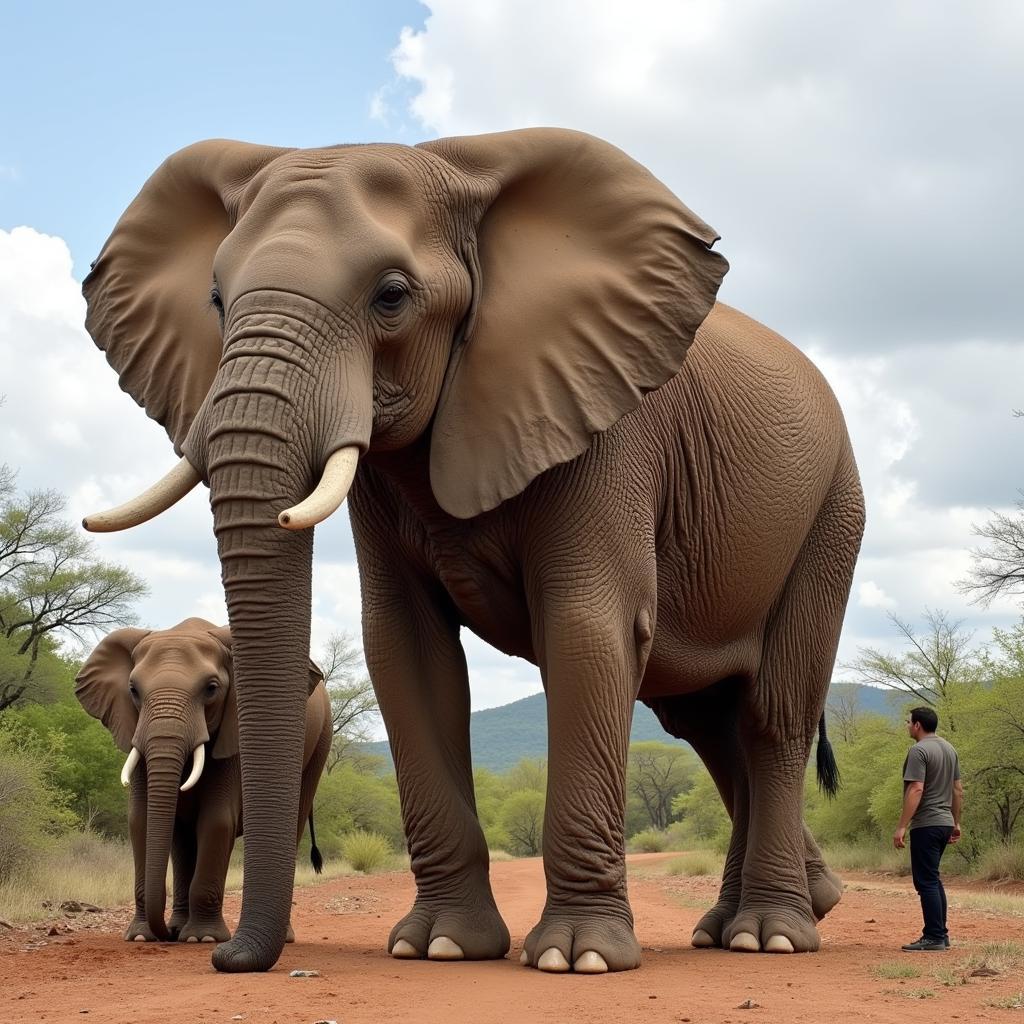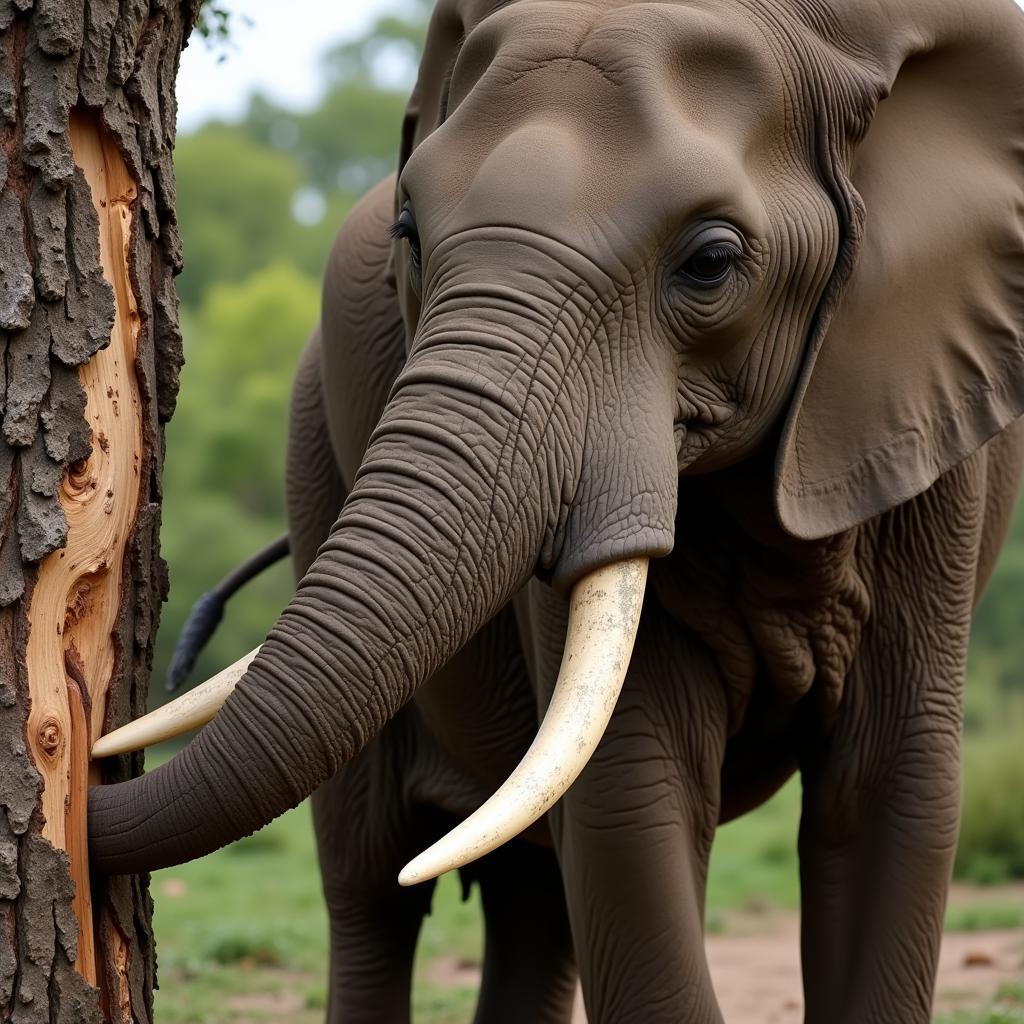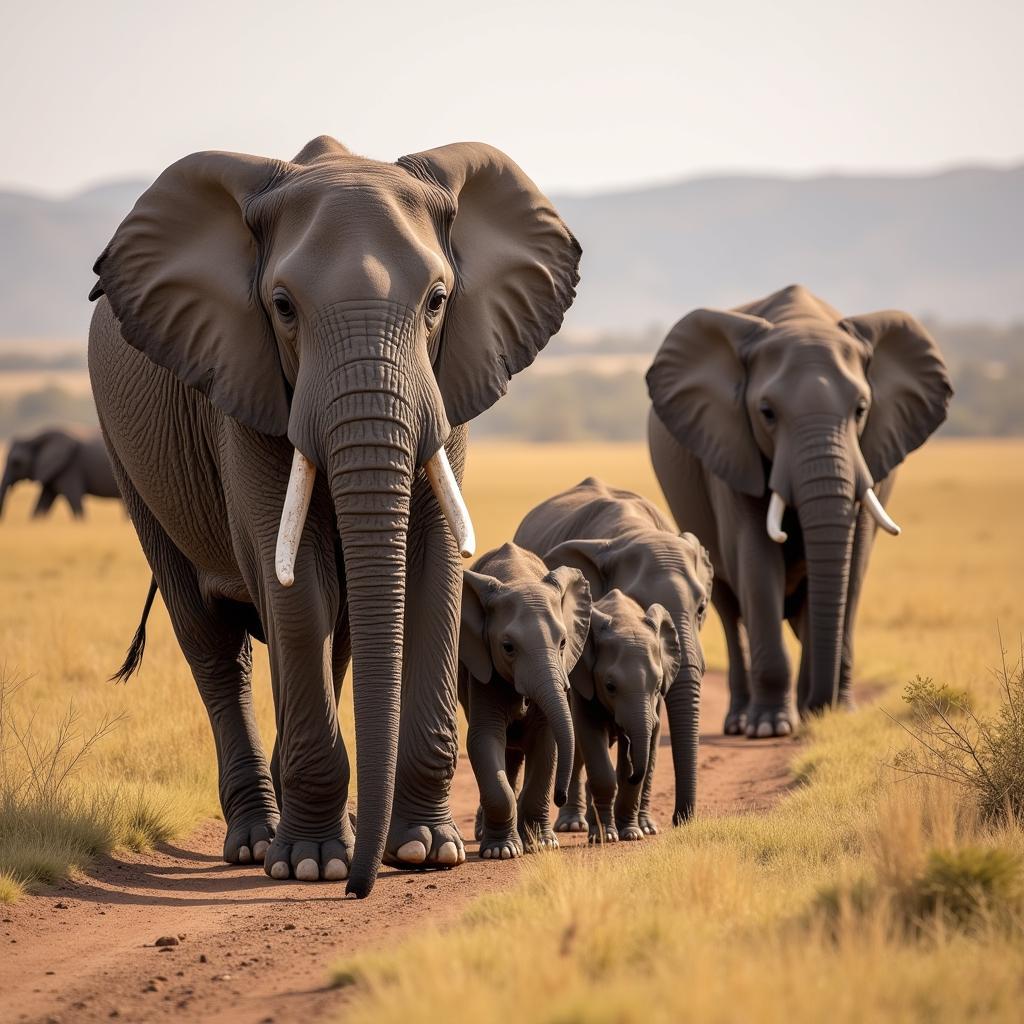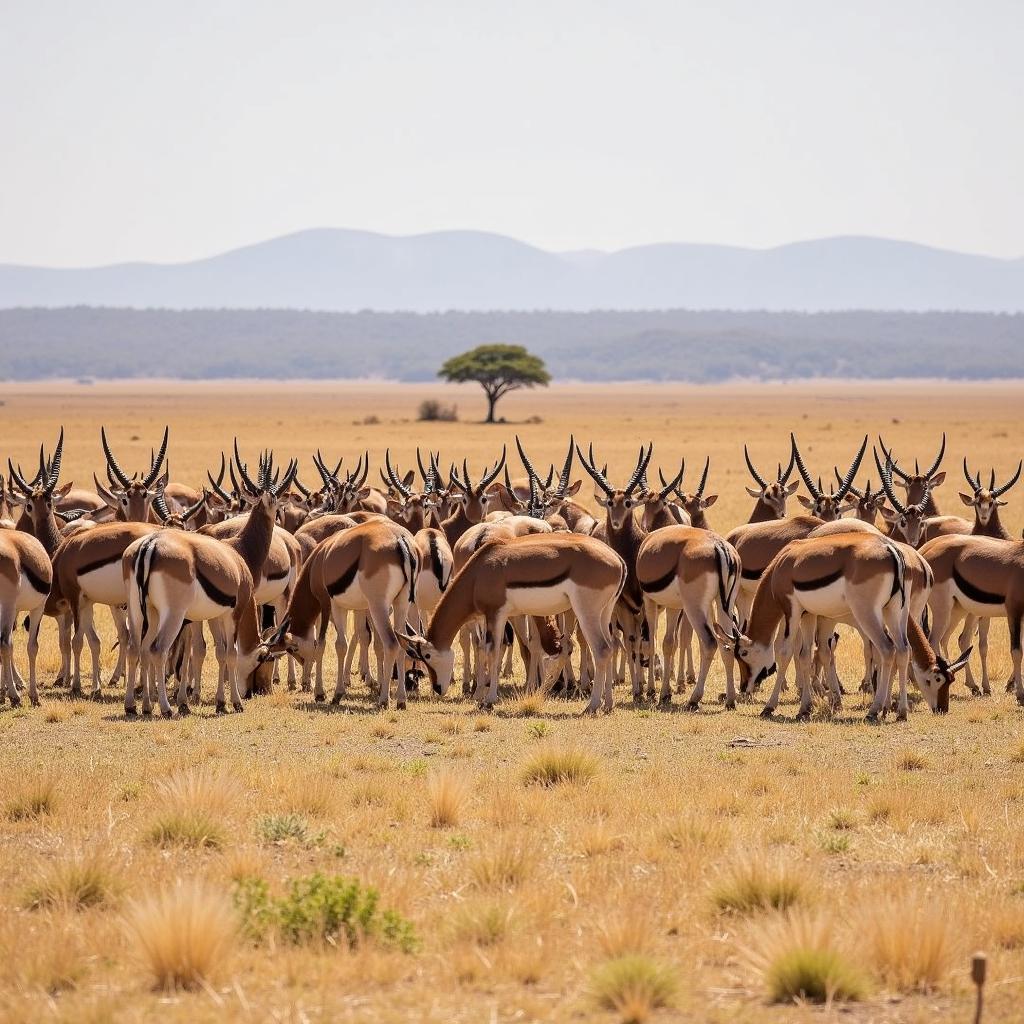African Elephant Facts: Unveiling the Giants with WWF
The African elephant, an iconic symbol of the continent’s wildlife, holds a place of wonder and fascination for people worldwide. Known for their immense size, intelligence, and complex social structures, these gentle giants play a vital role in maintaining the delicate balance of Africa’s ecosystems. In this exploration of “African elephant facts,” we delve into the world of these magnificent creatures, guided by the expertise of the World Wide Fund for Nature (WWF).
Unraveling the Mysteries: Key African Elephant Facts
African elephants, categorized into two subspecies – forest and savanna elephants – are distinguished by their size, habitat preferences, and physical characteristics. While both share the common thread of being elephants, understanding their unique traits sheds light on the diversity within this majestic species.
African Elephant Size and Weight: A Testament to Grandeur
The sheer size of African elephants is awe-inspiring. Savanna elephants, the larger of the two subspecies, can reach a shoulder height of up to 3.96 meters (13 feet) and weigh up to 10.4 tonnes (11.5 tons). Forest elephants, slightly smaller, still command respect with a shoulder height reaching 2.7 meters (8.9 feet) and a weight of up to 4.9 tonnes (5.4 tons).
 African Elephant Size Comparison
African Elephant Size Comparison
The Iconic Trunk: More Than Meets the Eye
The elephant’s trunk, a marvel of evolution, is a fusion of the nose and upper lip. This versatile appendage, controlled by over 40,000 muscles, serves multiple functions, from breathing and trumpeting to grasping food and showering themselves with water or dust.
Tusks: Symbols of Status and Tools for Survival
Both male and female African elephants possess tusks, elongated incisor teeth that continue to grow throughout their lifetime. These ivory tusks, symbols of strength and status, are used for a variety of tasks, including digging for water and minerals, stripping bark from trees, and defending themselves or their young.
 African Elephant Using Tusks for Foraging
African Elephant Using Tusks for Foraging
A Day in the Life: African Elephant Behavior and Social Dynamics
African elephants are highly social animals, living in herds led by a matriarch – the oldest and often most experienced female. These herds, typically consisting of related females and their young, rely on the matriarch’s wisdom and leadership for guidance and protection.
Communication: A Symphony of Sounds and Gestures
Elephants communicate through a complex system of vocalizations, including rumbles, trumpets, and screams, as well as visual cues like ear flapping and head shaking. These intricate communication methods strengthen their social bonds and convey vital information within the herd.
Family Ties: Nurturing the Next Generation
The strong family bonds within elephant herds are evident in their nurturing behavior. Calves, dependent on their mothers for the first few years of life, receive care and protection not only from their mothers but also from other females in the herd, known as “allomothers.”
African Elephants and the Ecosystem: Architects of Biodiversity
As herbivores with a voracious appetite, African elephants play a crucial role in shaping their environment. Their foraging habits, which include uprooting trees and digging for water, create clearings that promote plant growth and provide habitats for other animals.
Seed Dispersal: Sowing the Seeds for Future Generations
Elephants also contribute to the health of their ecosystems through seed dispersal. As they consume vast quantities of vegetation, they ingest seeds that are later deposited in their dung, often far from the parent plant, aiding in the dispersal and germination of various plant species.
Threats to Survival: The Plight of the African Elephant
Despite their size and strength, African elephants face numerous threats to their survival, primarily stemming from human activities.
Poaching: The Ivory Trade’s Devastating Impact
Poaching for ivory remains a significant threat to African elephants. Driven by the demand for ivory, particularly in Asian markets, poaching has decimated elephant populations, leaving an indelible scar on the species.
 African Elephant Family in Savanna
African Elephant Family in Savanna
Habitat Loss: Squeezed Out of Their Home
As human populations grow and expand, African elephants face increasing habitat loss due to agriculture, mining, and infrastructure development. This encroachment fragments their habitat, limits their access to resources, and increases human-wildlife conflict.
WWF’s Commitment: Protecting African Elephants for Future Generations
Recognizing the critical importance of African elephants, WWF has been at the forefront of conservation efforts for over six decades. Through a multi-pronged approach, WWF is working tirelessly to protect these magnificent creatures.
Anti-Poaching Initiatives: Combating the Illegal Wildlife Trade
WWF collaborates with governments, local communities, and other partners to combat poaching and dismantle illegal wildlife trafficking networks. This includes supporting anti-poaching patrols, strengthening law enforcement, and reducing demand for ivory through public awareness campaigns.
Habitat Conservation: Securing Space for Elephants to Thrive
WWF focuses on protecting and connecting vital elephant habitats through the establishment of protected areas, wildlife corridors, and sustainable land-use practices. This involves working with local communities to promote coexistence between people and elephants.
Conclusion: A Future for African Elephants
The fate of African elephants rests in our hands. By supporting organizations like WWF, advocating for stronger conservation policies, and making conscious choices to reduce our impact on their habitat, we can help ensure that these magnificent creatures continue to roam the African landscape for generations to come. The time to act is now, for the sake of the elephants and the health of our planet.

